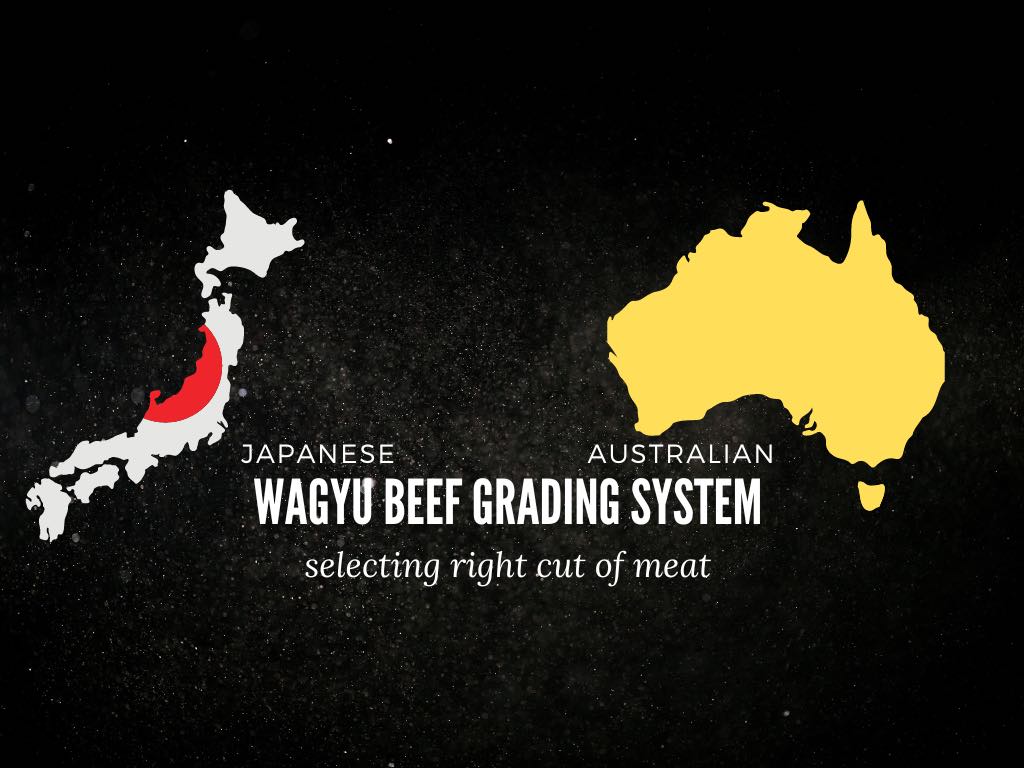
Wagyu Beef Grades Demystified: A Comprehensive Breakdown
|
|
Time to read 3 min
Welcome to One Stop Halal!
Written by: Imran Shaikh
|
|
Time to read 3 min
When it comes to Wagyu beef, understanding the wagyu grading system is crucial to selecting the right cut of meat for your culinary adventures. From marbling and color to texture and overall quality, the grading system provides valuable insights into the characteristics of Wagyu beef. This comprehensive overview will delve into the different grading systems used for Wagyu beef, including the Japanese and Australian systems. Whether you're a meat enthusiast or a curious foodie, this guide will equip you with the knowledge to navigate the world of Wagyu beef grades and make informed choices for an unforgettable dining experience.
The Japanese grading system is highly regarded and widely used to assess the quality of Wagyu beef. It focuses on four primary criteria: marbling, color and brightness, firmness and texture, and fat color and quality. Let's explore these criteria in detail:
Marbling refers to the distribution and quality of intramuscular fat throughout the meat. The Japanese grading system assigns grades from 1 to 5, with 5 being the highest. The higher the grade, the more abundant and evenly distributed the marbling, resulting in enhanced tenderness, juiciness, and flavor.
The color and brightness of the meat are evaluated for freshness and overall appeal. Vibrant, ruby-red meat with a lustrous appearance is indicative of higher grades.
Firmness and texture determine the meat's tenderness and bite. High-quality Wagyu beef should possess a tender, delicate texture with a pleasing mouthfeel.
The color and quality of the fat play a significant role in Wagyu beef grading. Ideal Wagyu fat is creamy white with a soft, smooth consistency. Higher grades exhibit superior fat quality.
Welcome to the Home of the Wagyu Beef. We deliver to your doorstep anywhere in the United States within 1-2 business days. We carry Wagyu Steaks from the original Japanese Wagyu bloodlines (Full Blood Wagyu) and American Wagyu (F1 Wagyu), which are hard to find in your nearby specialty butcher shops.
The Australian grading system for Wagyu beef is another widely recognized system that provides valuable information about the meat's quality. It also employs a scale of 1 to 9, with 9 being the highest grade. Let's explore the key factors considered in the Australian grading system:
Similar to the Japanese system, the marbling score is a crucial factor in the Australian grading system. It assesses the quantity and quality of marbling, with higher scores indicating more abundant and finely distributed fat throughout the meat.
The color of the meat is evaluated for its brightness, redness, and overall visual appeal. Bright, cherry-red meat is desirable and often associated with higher grades.
The texture of the meat is assessed for its tenderness and juiciness. Higher grades exhibit a delicate, velvety texture that adds to the overall eating experience.
Fat color is an essential aspect of grading in the Australian system. Creamy white to light yellow fat is preferred, indicating higher grades.
When selecting Wagyu beef, consider the purpose and personal preference. Higher-grade Wagyu beef, with its abundant marbling and exceptional tenderness, is ideal for enjoying the meat's luxurious qualities in its purest form. It is best prepared with simple cooking techniques that allow the marbling to melt and enhance the flavors.
Lower-grade Wagyu beef, while still of high quality, may be suitable for dishes where the beef is combined with other ingredients or flavors that complement its natural attributes. These cuts can be utilized in stir-fries, stews, or other dishes where the marbling will contribute to richness and juiciness.
The grading of Wagyu beef significantly influences its price. Higher-grade cuts with abundant marbling and superior quality command a premium price due to their exceptional characteristics and limited availability. These cuts are often reserved for special occasions or for those seeking the ultimate Wagyu experience.
Lower-grade cuts, while still delivering the unique qualities of Wagyu beef, tend to be more accessible and affordable. They provide an opportunity to enjoy the flavors and tenderness of Wagyu beef without the premium price tag.
Understanding the grading systems used for Wagyu beef is essential for making informed decisions when selecting cuts of meat. Whether you opt for the Japanese or Australian grading system, evaluating factors such as marbling, color, texture, and fat quality will guide you in choosing the right grade to suit your preferences and culinary goals. As you embark on your Wagyu beef journey, armed with this comprehensive overview, savor the melt-in-your-mouth tenderness and incomparable flavors that make Wagyu beef a truly exceptional dining experience.

© 2025 One Stop Halal, Inc.